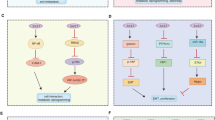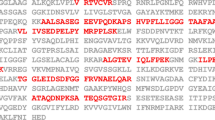Abstract
The E6 proteins of the high-risk Human papillomaviruses (HPV) types have a well-documented ability to target certain cellular proteins for ubiquitin-mediated degradation via the proteasome. Previous studies have shown that E6 proteins interact differently with different target proteins, and that the viral proteins, depending upon the target, may recruit diverse cellular ubiquitin-protein ligases. In this study, we have examined the abilities of E6 proteins from HPV-16 and HPV-18 to interact with and induce the degradation of two PDZ domain-containing targets, Dlg and hScrib. We have also mapped the binding site of E6 on hScrib and shown that the interaction of E6 with hScrib is distinct from its interactions with other PDZ domain-containing targets. This is reflected in the efficiency with which the two viral E6 proteins can inhibit hScrib's suppression of cell transformation.Dlg and hScrib have complementary activities in the control of epithelial cell polarity and the fact that both are targeted by high-risk HPV E6 proteins underlines their importance. Our finding that they are each targeted differently by HPV-16 and HPV-18 E6s suggests that the two viruses are subjected to somewhat different constraints and provides a possible explanation for the apparent redundancy in targeting both parts of this important control mechanism.
This is a preview of subscription content, access via your institution
Access options
Subscribe to this journal
Receive 50 print issues and online access
$259.00 per year
only $5.18 per issue
Buy this article
- Purchase on Springer Link
- Instant access to full article PDF
Prices may be subject to local taxes which are calculated during checkout






Similar content being viewed by others
References
Albertson R and Doe CQ . (2003). Nat. Cell Biol., 5, 166–170.
Bilder D . (2004). Genes Dev., 18, 1909–1925.
Bilder D, Li M and Perrimon N . (2000). Science, 289, 113–116.
Bilder D, Schober M and Perrimon N . (2003). Nat. Cell Biol., 5, 53–58.
Bryant PJ and Huwe A . (2000). Nat. Cell Biol., 2, E141–3.
Cavatorta AL, Fumero G, Chouhy D, Aguirre R, Nocito AL, Giri AA, Banks L and Gardiol D . (2004). Int. J. Cancer, 111, 373–380.
Dobrosotskaya IY and James GL . (2000). Biochem. Biophys. Res. Commun., 270, 903–909.
Dobrosotskaya IY . (2001). Biochem. Biophys. Res. Commun., 283, 969–975.
Dow LE, Brumby AM, Muratore R, Coombe ML, Sedelies KA, Trapani JA, Russell SM, Richardson HE and Humbert PO . (2003). Oncogene, 22, 9225–9230.
Gardiol D, Galizzi S and Banks L . (2002). J. Gen. Virol., 83, 283–289.
Gardiol D, Kuhne C, Glaunsinger B, Lee SS, Javier R and Banks L . (1999). Oncogene, 18, 5487–5496.
Glaunsinger BA, Lee SS, Thomas M, Banks L and Javier R . (2000). Oncogene, 19, 5270–5280.
Grifoni D, Garoia F, Schimanski CC, Schmitz G, Laurenti E, Galle PR, Pession A and Cavicchi S Strand D . (2004). Oncogene, 23, 8688–8694.
Humbert P, Russell S and Richardson H . (2003). Bioessays, 6, 542–553.
Kiyono T, Hiraiwa A, Fujita M, Hayashi Y, Akiyama T and Ishibashi M . (1997). Proc. Natl. Acad. Sci. USA, 94, 11612–11616.
Lee SS, Weiss RS and Javier RT . (1997). Proc. Natl. Acad. Sci. USA, 94, 6670–6675.
Legouis R, Jaulin-Bastard F, Schott S, Navarro C, Borg J-P and Labouesse M . (2003). EMBO Rep., 4, 1096–1102.
Massimi P, Gammoh N, Thomas M and Banks L . (2004). Oncogene, 23, 8033–8039.
Massimi P, Gardiol D, Roberts S and Banks L . (2003). Exp. Cell Res., 290, 265–274.
Mathew D, Gramates LS, Packard M, Thomas U, Bilder D, Perrimon N and Gorczyca M Budnik V . (2002). Curr. Biol., 12, 531–539.
Nakagawa S and Huibregtse JM . (2000). Mol. Cell Biol., 20, 8244–8253.
Nakagawa S, Yano T, Nakagawa K, Takizawa S, Suzuki Y, Yasugi T, Huibregtse JM and Taketani Y . (2004). Br. J. Cancer, 90, 194–199.
Navarro C, Nola S, Audebert S, Santoni M-J, Arsanto J-P Ginestier C, Marchetto S, Jacquemier J, Isnardon D, Le Bivic A, Birnbaum D and Borg J-P . (2005). Oncogene, 24, 4330–4339.
Petit MMR, Meulemans SMP, Alen P, Ayoubi TAY, Jansen E and Van de Ven WJM . (2005). BMC Cell Biol., 6, 1.
Pim D, Storey A, Thomas M, Massimi P and Banks L . (1994). Oncogene, 9, 1869–1876.
Pim D, Thomas M and Banks L . (2002). Oncogene, 21, 8140–8148.
Pim D, Thomas M, Javier R, Gardiol D and Banks L . (2000). Oncogene, 19, 719–725.
Saras J and Heldin CH . (1996). Trends Biochem. Sci., 12, 455–458.
Tanentzapf G and Tepass U . (2003). Nat. Cell Biol., 5, 46–52.
Thomas M, Glaunsinger B, Pim D, Javier R and Banks L . (2001). Oncogene, 20, 5431–5439.
Thomas M, Kalita A, Labreque S, Pim D, Banks L and Matlashewski G . (1999). Mol. Cell. Biol., 19, 1092–1100.
Thomas M, Laura R, Hepner K, Guccione E, Sawyers C, Lasky L and Banks L . (2002). Oncogene, 21, 5088–5096.
Thomas U, Phannavong B, Muller B, Garner CC and Gundelfinger ED . (1997). Mech. Dev., 62, 161–174.
Watson RA, Rollason TP, Reynolds GM, Murray PG, Banks L and Roberts S . (2002). Carcinogenesis, 11, 1791–1796.
Watson RA, Thomas M, Banks L and Roberts S . (2003). J. Cell Sci., 116, 4925–4934.
Wigler M, Sweet R, Sim GK, Wold B, Pellicer A, Lacy E, Maniatis T, Silverstein S and Axel R . (1979). Cell, 16, 777–785.
Woods DF and Bryant PJ . (1991). Cell, 66, 451–464.
Woods DF, Hough C, Peel D, Callaini G and Bryant PJ . (1996). J. Cell Biol., 134, 1469–1482.
Woods DF, Wu JW and Bryant PJ . (1997). Dev. Genet., 20, 111–118.
zur Hausen H . (1991). Virology, 184, 9–13.
Acknowledgements
We are grateful to Marleen Petit for the kind gift of the 4PDZ constructs and we thank David Pim and Helena Sterlinko for comments on the manuscript. This work was supported in part by a grant from the Associazione Italiana per La Ricerca sul Cancro to LB and J-PB is funded by INSERM, Institut Paoli-Calmettes, La Ligue Contre Le Cancer (Label Ligue) and ACI ‘Jeune Chercheur’. CN is the recipient of a fellowship from Conseil Général.
Author information
Authors and Affiliations
Corresponding author
Rights and permissions
About this article
Cite this article
Thomas, M., Massimi, P., Navarro, C. et al. The hScrib/Dlg apico-basal control complex is differentially targeted by HPV-16 and HPV-18 E6 proteins. Oncogene 24, 6222–6230 (2005). https://doi.org/10.1038/sj.onc.1208757
Received:
Revised:
Accepted:
Published:
Issue Date:
DOI: https://doi.org/10.1038/sj.onc.1208757
Keywords
This article is cited by
-
Novel effect of the high risk-HPV E7 CKII phospho-acceptor site on polarity protein expression
BMC Cancer (2022)
-
The Scribble family in cancer: twentieth anniversary
Oncogene (2020)
-
Cervical cancer subtypes harbouring integrated and/or episomal HPV16 portray distinct molecular phenotypes based on transcriptome profiling of mRNAs and miRNAs
Cell Death Discovery (2019)
-
Independent prognostic role of human papillomavirus genotype in cervical cancer
BMC Infectious Diseases (2017)
-
HPV-16 impairs the subcellular distribution and levels of expression of protein phosphatase 1γ in cervical malignancy
BMC Cancer (2015)



